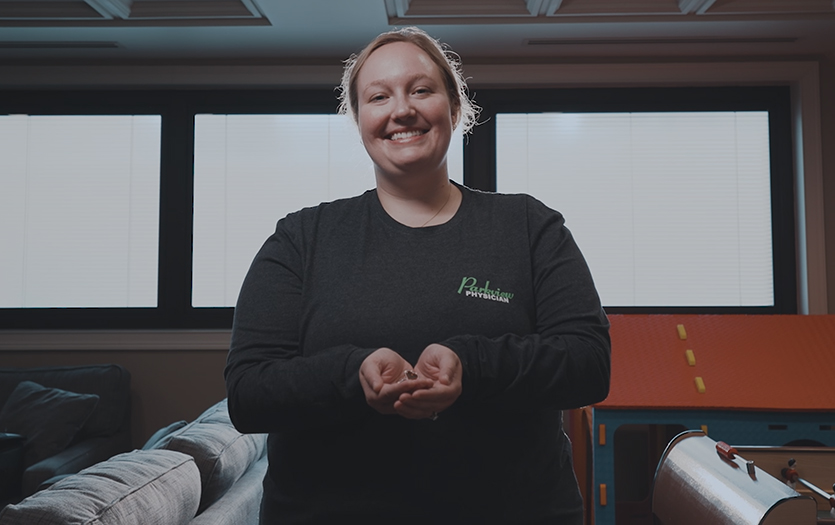
This post was written by Erin Norton, RN, BSN, MBA, Community Outreach Director, Women’s and Children’s Service Line, Parkview Health.
Parents have held their babies close since the beginning of time. Snuggling a baby is first and foremost an expression of love. It wasn’t until much later that science caught up and began to explain the health benefits of skin-to-skin contact.
Skin-to-skin contact, or Kangaroo Care, occurs when a parent holds their baby right against their chest. The baby, wearing only a diaper, is placed directly against the parent’s skin. The practice got the attention of scientists after it became a necessity in South America. Hospitals didn’t have enough warming baby beds, so parents’ own body heat was needed to keep fragile babies warm. That’s when doctors began noticing other benefits, such as decreased crying and stabilization of babies’ heart rate and breathing.
For moms who are nursing, skin-to-skin can help facilitate breastfeeding. The baby is already “in the kitchen.” For dads and moms who are not breastfeeding, skin-to-skin is simply a great way to bond. Hearing a parent’s heartbeat and feeling the warmth of the skin is calming to babies. As they are adjusting to life outside the womb, this can help smooth the transition.
Skin-to-skin is especially important right after delivery, but can be done throughout your hospital stay and when you go home. It can be used as a comforting technique when dealing with an infant’s crying and can help warm a baby after a bath. Snuggling a baby is one of the joys of parenting. In addition to the health benefits, it is a simple and effective way to show babies they are loved.



